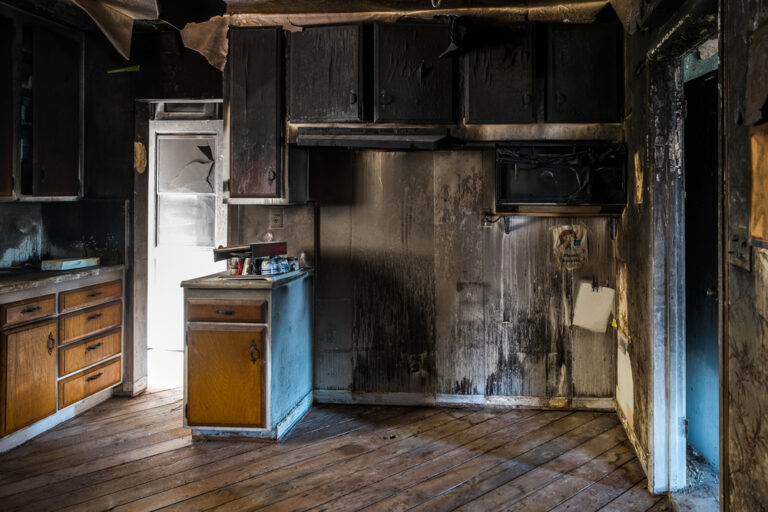How Accredited Claims Adjusters Assess Smoke Damage
Smoke damage is an unavoidable consequence of fires, leaving a trail of destruction that extends far beyond the initial flames. When homes or businesses are impacted by smoke, the intricate process of assessment falls into the hands of Accredited Claims Adjusters (ACA). These professionals bring a wealth of expertise to the table, employing a systematic approach to evaluate the extent of smoke damage. Individuals with ACA credentials with initial training from Educational Services & Consulting assess smoke damage to ensure a fair and accurate claims settlement.

1. Understanding the Nature of Smoke
Before delving into assessment procedures, accredited claims adjusters develop a deep understanding of the nature of smoke. Smoke is a complex mixture of particles, gases, and chemicals and can infiltrate various materials. Smoke also leaves behind residues and odors that pose unique challenges. Different types of fires produce distinct types of smoke and accredited claims adjusters need to know the specifics of each.
2. On-Site Inspection
Accredited claims adjusters kick off the assessment process with a thorough on-site inspection. This hands-on examination involves evaluating the entire property, from visible damage to concealed areas. It’s a meticulous walkthrough, and experienced accredited claims adjusters know that smoke can permeate walls, ceilings, insulation, and personal belongings. This initial inspection lays the foundation for a comprehensive understanding of the full scope of smoke damage.
3. Documentation and Photography
Documentation is a critical component of the assessment process. Accredited claims adjusters meticulously record their findings, detailing the visible smoke damage, soot deposits, and any structural compromise. High-quality photographs accompany these records, providing a visual narrative that aids in both assessment and communication with insurers.
4. Determining Types of Smoke Damage
Smoke damage isn’t a one-size-fits-all scenario. Accredited claims adjusters distinguish between wet smoke, dry smoke, protein residue, and fuel oil soot, each presenting unique challenges in terms of cleanup and restoration. This nuanced understanding guides the formulation of a tailored assessment and recovery strategy.
5. Evaluating Structural Damage
Smoke damage often intertwines with structural damage, especially in the aftermath of a fire. Accredited claims adjusters scrutinize the integrity of walls, ceilings, and support structures. They assess whether fire or smoke has compromised the structural stability of the property, necessitating repairs or reconstruction.
6. Contents Assessment
A thorough assessment extends beyond the structural elements to encompass the contents of the property. Accredited claims adjusters evaluate the impact of smoke on personal belongings, furniture, electronics, and other items. This includes determining salvageable items and estimating the cost of replacing or repairing damaged possessions.
7. Odor Evaluation
Smoke damage isn’t solely about visible residues as the smell of smoke can persist long after the fire is extinguished. Accredited claims adjusters employ their sense of smell and, if necessary, bring in specialists to evaluate and address smoke-related odors. This step is crucial in ensuring that the property is restored not only visually but also in terms of air quality.
8. Collaboration with Restoration Experts
Accredited claims adjusters recognize the value of collaboration. They work closely with restoration experts who specialize in smoke damage cleanup. This combination of expertise ensures a comprehensive and effective restoration plan. Accredited claims adjusters leverage the insights of restoration professionals to accurately estimate the costs and timelines associated with smoke damage remediation.
9. Policy Review and Aligning with Coverage Parameters
Amid the assessment process, accredited claims adjusters meticulously review the insurance policy to align their findings with coverage parameters. This step ensures that the assessment is not only accurate but also adheres to the terms and conditions outlined in the insurance policy. A thorough review also sets the stage for a transparent and fair claims settlement.
10. Communication and Advocacy
Effective communication is critical to the success of accredited claims adjusters. They maintain open lines of communication with policyholders, guiding them through the assessment process and explaining the intricacies of smoke damage coverage. Accredited claims adjusters often serve as advocates, ensuring that policyholders receive the support and compensation they are entitled to under their insurance policy.

Assessing smoke damage is both an art and a science. Accredited claims adjusters bring a blend of technical expertise, practical experience, and empathetic communication to the task. From the initial on-site inspection to collaborating with restoration experts, their multifaceted approach ensures a thorough and accurate assessment of smoke damage. In the aftermath of a fire, these professionals assist homeowners in providing clarity and guidance in understanding their policy as they seek to rebuild and restore their property.
For more information on how to earn your 6-20 ACA designation and join this growing field, we invite you to call our Clermont, Florida office at 1-800-309-2459 or read more about our accredited claims adjuster certification process on our website. Beyond our ACA courses, we have partnerships that allow our students to continue learning the proper ways to handle claims and continue to grow your career.
In Florida, once you earn your 6-20 accredited claims adjuster designation, you can apply to the state for your all-lines adjuster license. Do you have plans for possibly one day moving out of Florida? No problem! Even if you move out of the state of Florida or your practice takes you out of state, Florida has a reciprocity agreement with other states within the U.S. that allows individuals who obtain their Florida license to be eligible to work in 34 of the 37 states across the U.S. that require an adjuster license.
Have we piqued your interest? Give us a call at 1-800-309-2459 and we can help get you started on your ACA designation!
This step by step guide is for informational purposes only and please follow the most recent protocols or the ones provided by your employer. Information in this blog post is for informational purposes only and is subject to change at any time.
